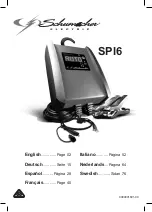
44
SAFETY
The passenger compartment structure, on the other hand, has been
designed to provide maximum resistance without undergoing deformation
in order to guarantee a protective survival cell for the occupants.
Active safety
The aim of the active safety system is to reduce the risk of accidents and
injury severity.
The vehicle has been designed to provide a high level of safety for whoever
uses it. The following systems are specific active safety components:
●
braking system
●
air conditioning and heating system
●
external lights
●
buzzer and warning lights (flashing).
The braking system includes the mechanical brake system and the
electronic stability and traction control system (ABS and EBD): this is
designed to prevent the wheels from locking and to provide good handling
and stability.
In some situations, fast acceleration is important to get out of dangerous
situations. However, always use the accelerator with extreme caution.
During acceleration of the driving wheels, the anti-skid system may help
you in certain dangerous situations.
The air conditioning and heating system in the passenger compartment
can add to driving comfort and keep you alert so that you can react
quickly when necessary.
It is very important to be able to see the road clearly and be seen and
external lights must be turned on when the conditions so require.
Seat belts
Statistics show that when used correctly, seat belts reduce the risk of
injury in various types of crashes including the risk of ejection from the
vehicle and impact with the interior of the vehicle.
If unfastened, the seat belts do not provide any type of protection. Before
every trip, always make sure that all occupants are wearing their seat
belts.
Warning
Seat belts must be worn at all times and must be properly fastened
and adjusted! Correct use of the seat belts can reduce the risk of serious
injury in the event of an accident or if the vehicle overturns.
Warning
For an effective restraining action, the seat belt must be fastened
correctly with the seat backrest in the upright position. The seat belt is
fastened correctly when the upper part of the belt crosses the centre of
the shoulder (not the neck) and the abdominal section is fitted over the
hips (not the abdomen). Make sure it is not twisted and that it passes
closely over your body; if not, in the event of a head-on collision, it may
move and cause injury to the abdomen. Avoid wearing bulky clothing
that may interfere with the proper operation of the seat belts.
The seat belts have a lap-shoulder belt with an automatic emergency-
locking retractor and are fitted with a pyrotechnic-powered pretensioner
and an automatic system that reduces the force applied to the occupant.
Summary of Contents for Portofino
Page 1: ......
Page 3: ......
Page 9: ...Introduction 9 ...
Page 11: ...1 GENERAL ...
Page 14: ...14 GENERAL ...
Page 20: ...20 GENERAL ...
Page 28: ...28 GENERAL ...
Page 29: ...1 GENERAL 29 2670 4586 1633 2090 1645 1318 ...
Page 33: ...1 GENERAL 33 Warning Maximum permissible speed with winter tyres is 240 km h ...
Page 41: ...2 SAFETY ...
Page 71: ...2 SAFETY 71 ...
Page 73: ...3 ABOUT YOUR VEHICLE ...
Page 80: ...80 ABOUT YOUR VEHICLE ...
Page 81: ...3 ABOUT YOUR VEHICLE 81 Instrument panel 6 5 1 5 3 7 2 5 4 5 View of vehicle instrument panel ...
Page 154: ...154 ABOUT YOUR VEHICLE Warning Check that the deflector has been secured correctly ...
Page 155: ...3 ABOUT YOUR VEHICLE 155 ...
Page 157: ...4 ADVICE FOR EMERGENCY SITUATIONS ...
Page 185: ...4 ADVICE FOR EMERGENCY SITUATIONS 185 ...
Page 187: ...5 CARE OF THE VEHICLE ...
Page 197: ...5 CARE OF THE VEHICLE 197 ...
Page 198: ...Glossary 200 ...
Page 199: ...6 GLOSSARY ...
Page 202: ......
Page 203: ...7 INDEX ...
















































